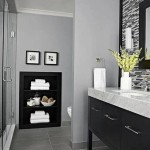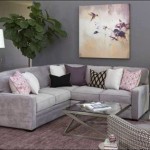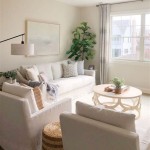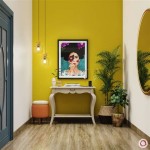TV Room Decorating Ideas for Small Spaces
Decorating a small TV room presents unique challenges. The primary objective is to maximize functionality and comfort within a limited footprint. Thoughtful planning and strategic design choices are crucial to create a space that feels both spacious and inviting. This article will explore several decorating ideas tailored specifically for small TV rooms, focusing on space optimization, furniture selection, and visual enhancement techniques.
Optimizing Space with Multifunctional Furniture
One of the most effective strategies for decorating a small TV room is incorporating multifunctional furniture. These pieces serve multiple purposes, reducing the need for numerous individual items and freeing up valuable floor space. Examples include sofa beds, storage ottomans, and coffee tables with lift-top mechanisms.
Sofa beds offer a dual solution, providing comfortable seating during the day and a sleeping surface for overnight guests. When selecting a sofa bed, consider the ease of transformation between the two functions. Models with simple, intuitive mechanisms are preferable. Additionally, prioritize comfort in both the seating and sleeping configurations. Look for sofas with supportive cushions and a comfortable mattress.
Storage ottomans are another versatile option. They provide extra seating, a place to rest feet, and concealed storage for blankets, pillows, or electronic accessories. Choose an ottoman that complements the room's décor and is appropriately sized for the space. Consider models with removable lids for easy access to stored items.
Coffee tables with lift-top mechanisms are particularly useful for small TV rooms. They provide a surface for drinks and snacks while also offering a convenient workspace for laptops or tablets. When the lift-top is raised, it creates a higher surface, making it easier to eat or work comfortably from the sofa. Some models also include storage compartments beneath the lift-top, further enhancing their functionality.
Beyond these specific examples, consider other multifunctional furniture options such as nesting tables, which can be easily pulled out when needed and stored away to save space, and wall-mounted shelves with integrated storage compartments. The key is to select pieces that serve multiple purposes and contribute to the overall organization of the room.
Creating Visual Space Through Strategic Design
Visual perception plays a significant role in how spacious a room feels. Employing strategic design techniques can create the illusion of greater space, even in a small TV room. These techniques include the use of light colors, mirrors, and vertical elements.
Light colors reflect more light than dark colors, making a room feel brighter and more open. Consider painting the walls in a light neutral color, such as white, cream, or light gray. These colors provide a clean backdrop and allow natural light to bounce around the room. Avoid using dark or saturated colors, as they can make the space feel smaller and more enclosed.
Mirrors are a powerful tool for creating the illusion of space. They reflect light and create the impression of depth, making a room feel larger than it actually is. Hang a large mirror on a wall opposite a window to maximize the effect. Alternatively, use multiple smaller mirrors to create a gallery wall or to highlight specific features of the room. The placement of the mirror is crucial; ensure it reflects a pleasant view or a well-lit area to enhance its impact.
Vertical elements draw the eye upward, creating the illusion of height. Use tall bookshelves, vertical artwork, or floor-to-ceiling curtains to emphasize the vertical dimension of the room. Vertical stripes on wallpaper or rugs can also contribute to this effect. Avoid using low, horizontal furniture, as it can visually compress the space.
In addition to these techniques, consider minimizing clutter and keeping the room organized. A cluttered space will always feel smaller than a clean, organized one. Use storage solutions to keep items out of sight and create a sense of order.
Optimizing TV Placement and Viewing Angles
The placement of the TV is a critical factor in creating a comfortable and functional TV room. In a small space, it is particularly important to optimize viewing angles and ensure that the TV is appropriately sized for the room. Considerations include the distance between the seating and the TV, the height of the TV, and the angle at which it is viewed.
The optimal viewing distance depends on the size of the TV screen. As a general rule, the viewing distance should be approximately 1.5 to 2.5 times the diagonal screen size. For example, if the TV has a 55-inch screen, the optimal viewing distance would be between 82.5 and 137.5 inches (approximately 7 to 11.5 feet). Adjust the seating arrangement to achieve the appropriate viewing distance. If the room is too small to achieve the ideal distance, consider using a smaller TV screen.
The height of the TV is also important for comfortable viewing. The center of the TV screen should be at eye level when seated. This will prevent neck strain and ensure a comfortable viewing experience. If the TV is mounted on the wall, use a mounting bracket that allows for height adjustment. Alternatively, place the TV on a low stand to achieve the appropriate viewing height.
The viewing angle refers to the angle at which the TV is viewed from the seating position. Ideally, the viewing angle should be within 30 degrees of perpendicular to the screen. Viewing the TV from a wider angle can result in distorted images and reduced color contrast. Use a swivel mount to adjust the TV's angle as needed to optimize the viewing experience from different seating positions.
Furthermore, consider cable management solutions to keep cords and cables organized and out of sight. This will not only improve the aesthetics of the room but also prevent tripping hazards. Use cable ties, cable sleeves, or cable management boxes to conceal wires and create a cleaner, more organized look.
In addition to the above, lighting play a crucial role. The room's lighting should be controllable to minimize glare on the screen, which optimizes the viewing experience. Use layered lighting, which includes ambient, task, and accent lighting, to allow flexibility in adjusting the room's brightness. Dimmer switches are excellent for controlling the intensity of the lights. Using blackout curtains ensures that the room can be darkened during daytime viewing.
By carefully considering these factors, a small TV room can be transformed into a comfortable and functional space for entertainment and relaxation. The key is to prioritize space optimization, visual enhancement, and ergonomic design to create a room that feels both spacious and inviting.

20 Small Tv Room Ideas That Balance Style With Functionality
:max_bytes(150000):strip_icc()/CASSPhoto_JND_Annisipour_087-6a89d9a7b702485bb76523071d89fc6f.jpg?strip=all)
42 Tv Room Ideas For Binge Watching In Comfort And Style

20 Small Tv Room Ideas That Balance Style With Functionality Salas Pequenas Re Para Sala Pequena Decoração

20 Small Tv Room Ideas That Balance Style With Functionality

Designing Around Your Tv Like A Pro Cristina Depina Interior Design Room Ideas Cozy Simple Living Small Rooms

20 Small Tv Room Ideas That Balance Style With Functionality

11 Tv Room Ideas For Limited Spaces Designcafe

44 Inspiring Tv Room Ideas For Ultimate Comfort In 2025

11 Tv Room Ideas For Limited Spaces Designcafe

7 Best Ways To Decorate Around The Tv Maria Killam Small Space Living Room Rooms Apartment Furniture Layout
Related Posts







